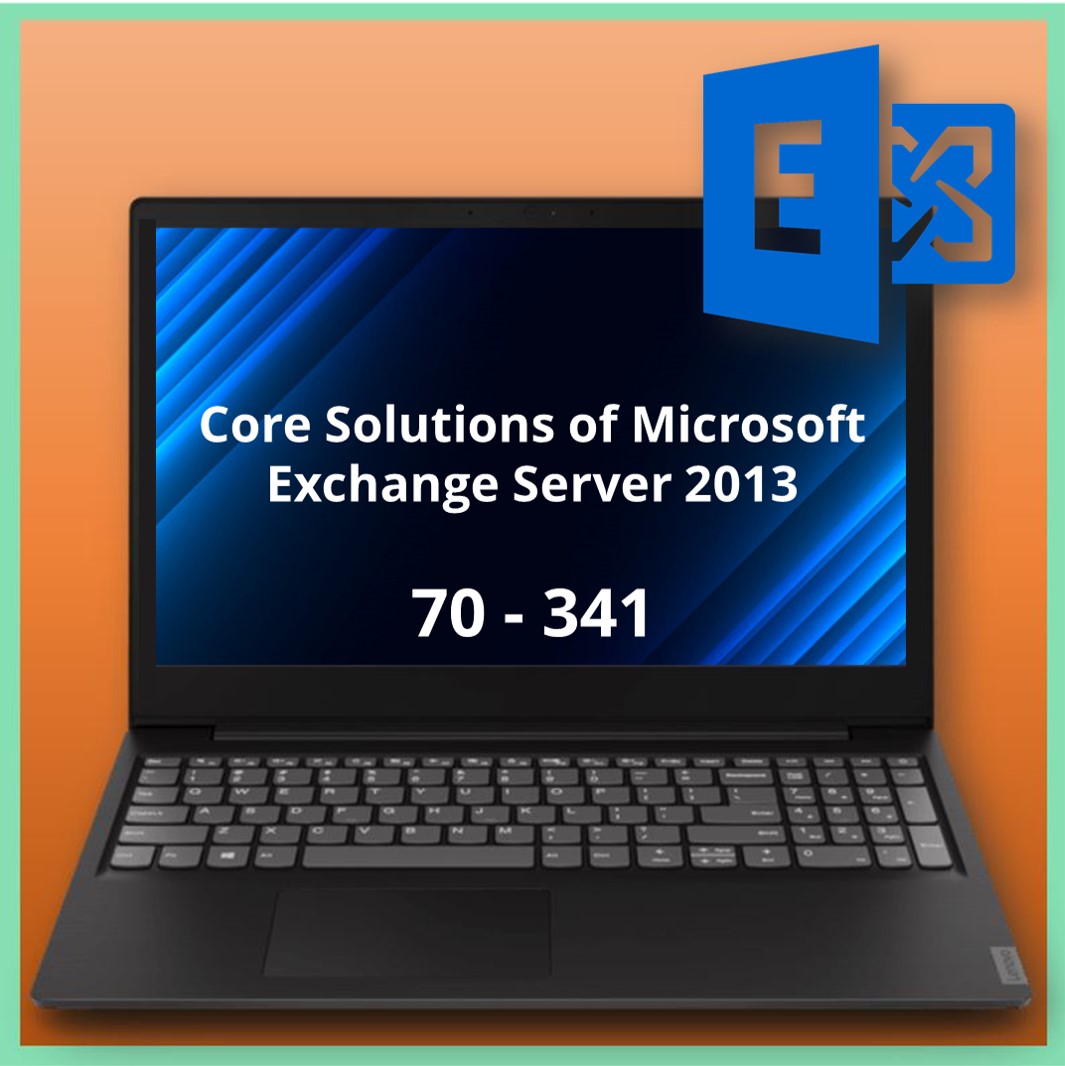70-341: Core Solutions of Microsoft Exchange Server 2013
In deze online cursus 70-341: Core Solutions of Microsoft Exchange Server 2013 leer je de belangrijkste functionaliteiten van Exchange Server 2013 kennen zodat je Exchange Server 2013 kunt installeren, configureren en beheren. Je krijgt richtlijnen en best practices mee om Exchange Server 2013 optimaal in te zetten voor je organisatie.
Onderwerpen die onder andere aan bod komen zijn de uitrol van Exchange Server 2013, mailbox server beheer, cliënt access servers, configuratie van mobiele connectiviteit, message transport, access control, high availability, troubleshooting en nog veel meer.
Doelgroep
Systeembeheerder, Netwerkbeheerder
Let op: Deze training blijft wel bestaan maar de mogelijkheid om het bijbehorende examen af te leggen is per 31 januari 2021 komen te vervallen.
Een groot aantal Microsoft trajecten zijn namelijk aan het veranderen. Veel MCSA en MCSE trajecten maken plaats voor Role-Based trajecten.
De vervanger van deze online training is:
MS-203: Microsoft 365 Messaging
Resultaat
Na het volgen van de online cursus 70-341: Core Solutions of Microsoft Exchange Server 2013 kun je zelfstandig Exchange server 2013 installeren, configureren en beheren.
Voorkennis
Je bent in het bezit van de MCSA: Windows Server 2012 certificering of je hebt vergelijkbare kennis.
Inhoud
Tijdens de online cursus 70-341: Core Solutions of Microsoft Exchange Server 2013 worden de volgende onderwerpen behandeld:
Deployment
- Recognize:
- The different server roles within Exchange Server 2013
- The processor architecture’s requirements of installing Exchange Server 2013
- How to:
- Prepare the AD DS schema
- Install Exchange Server 2013 with specified roles using either the GUI or Command Line
- Use GUI management tools
- The uses of Exchange Management Shell
- Demonstrate how to: prepare a schema, prepare a AD switch, prepare a domain command, install exchange from the command line
Mailbox Server Management
- Recognize:
- The new features of the Mailbox server role in Exchange Server 2013
- The functions that can be performed using the Mailbox database properties
- Types of Exchange Server recipients that are supported in Exchange Server 2013
- Alternative Mailbox types
- Exchange Server 2013 Distribution Groups properties
- Describe the hardware and memory requirements for the Mailbox server role
- Demonstrate how to: create and configure Mailbox databases, create a new distribution group
Client Access Servers
- Recognize:
- The considerations when configuring or planning a Client Access Server
- What configurations Client Access Server can adjust
- Client Access Server (CAS) authentication type attributes
- Services that are provided by the Client Access Server role
- Exchange Server 2013 availability service attributes
- Identify the clients that are natively supported in Exchange Server 2013
- Demonstrate how to configure: A Client Access Server certificate, Integrated Windows Authentication, MailTips
Configuring Mobile Connectivity
- Recognize how to use Set-OwaVirtualDirectory cmdlet to specify file types properties
- Describe how to implement Outlook Web App Policies in Exchange Server 2013
- Identify what type of mailbox policies to use in certain security situations
- Identify what cmdlet should be used when creating a new Public Folder mailbox using EMS
- Recognize the method that can be used to assign permissions to a public folder
- Demonstrate how to configure policies, use OWA, configure and manage public folders
Message Transport
- Identify:
- Services that are involved in message transport
- Tools used for troubleshooting SMTP message delivery
- Options available when creating a new accepted domain
- Recognize the different types of delivery groups in Exchange Server 2013
- Describe how to configure a hub site using the cmdlet
- Recognize how SMTP Receive Connectors
- Describe transport rules in Exchange Server 2013
- Demonstrate how to: Configure an accepted domain, Verify SMTP using Telnet, Create a SMTP connector
Access Control
- Recognize Management Role components functions
- Identify components of a role assignment policy functions
- Determine which split permissions model should be used in a particular scenario
- Choose which anti-spam agent filters are needed in a particular scenario
- Describe SCL Thresholds and Actions
- Conceptual SIM, Implement content filtering, Set SCL thresholds, Use EMS
High Availability and DR
- Recognize:
- Characteristics of database availability groups in Exchange Server 2013
- Items that could be part of an Exchange Server 2013 data loss scenario
- How to configure recovery options in Exchange Server 2013
- Identify:
- Settings available when creating database availability groups in Exchange Server 2013
- Key benefits of Network Load Balancing in Exchange Server 2013
- Options available when performing a database recovery
- describe the scenarios that would require an Exchange Server 2013 backup and restore solution
Monitoring and Troubleshooting
- recognize:
- Which cmdlets can be used to manage resource policies in Exchange Server 2013
- Guidelines to follow when troubleshooting database failures
- Guidelines to follow when troubleshooting performance issues
- Identify the counters used to monitor transport components
- Identify the counters used to monitor Client Access server components
- Conceptual SIM. Identify how to: Use counters, Extend a partition
Inbegrepen
| Certificaat van deelname | ja |
| Voortgangsbewaking | ja |
| Geschikt voor mobiel | ja |
| Studieadvies | Onze consultants zijn beschikbaar om je te voorzien van studieadvies. |
| Studiemateriaal | Gecertificeerde docenten met uitgebreide kennis over de onderwerpen. |
| Service | Service via telefoon of e-mail. |
Duur
23 uur
Beschikbare taal
Engels
Online toegang
6 maanden




